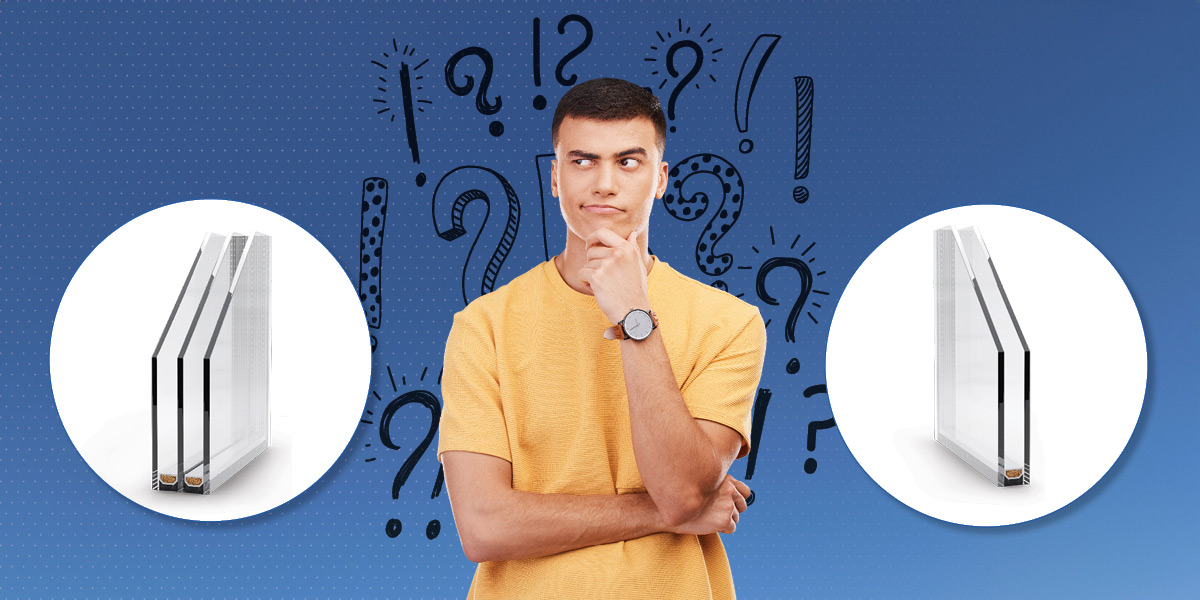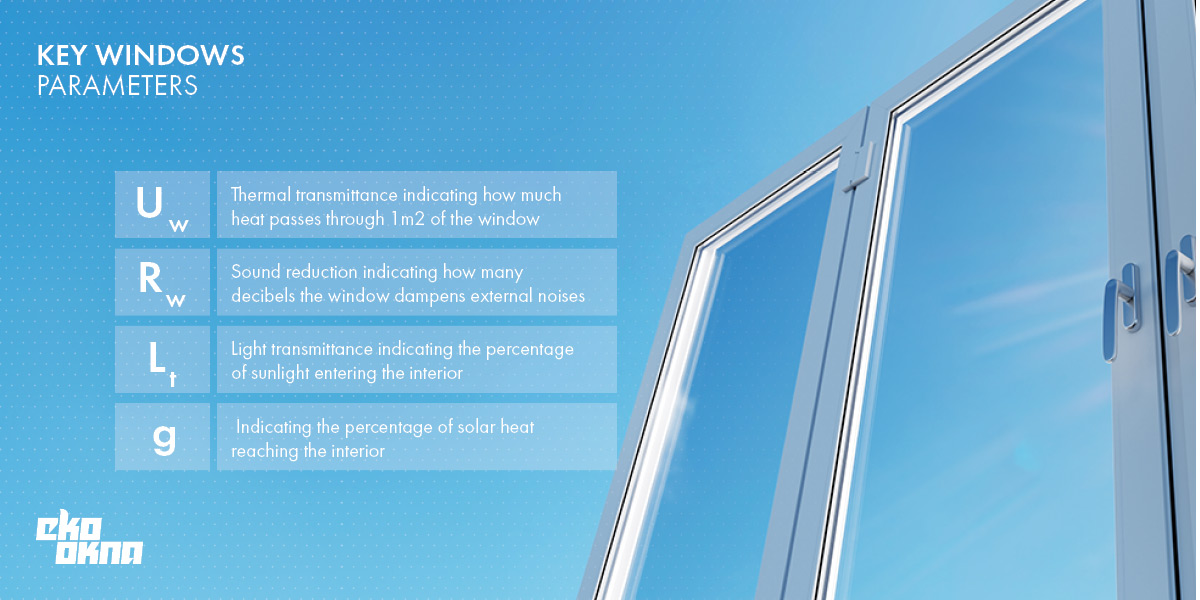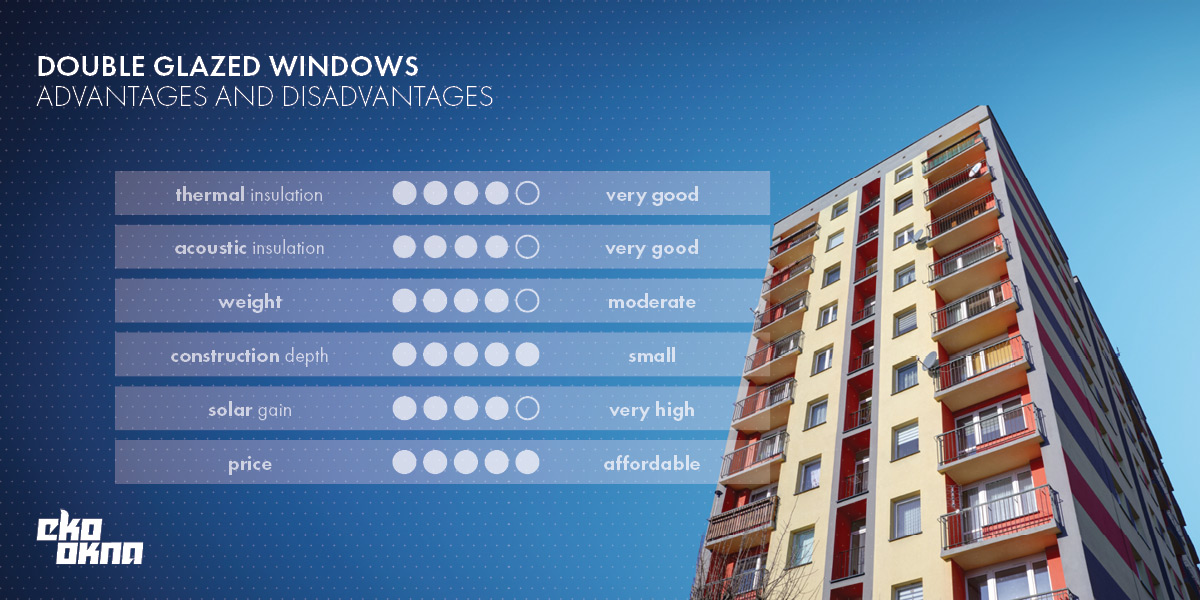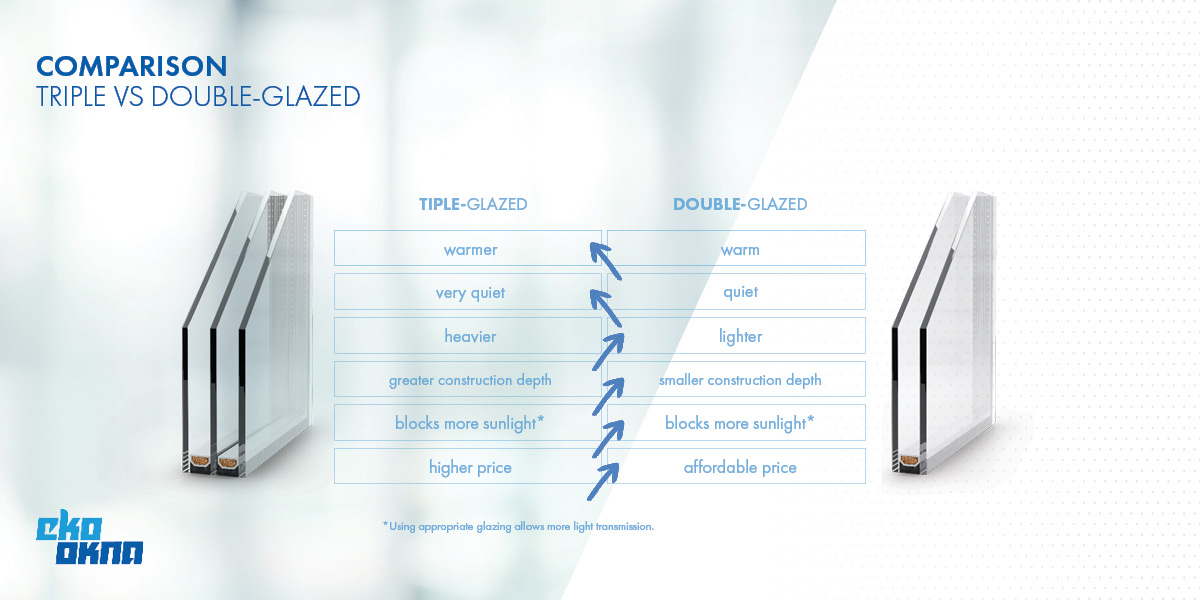29 February, 2024
windows
Modern windows are true marvels of technology, with insulated glass units leading the way as a major revolution. Are triple-pane windows, which are more expensive than their double-pane counterparts, a good decision? Join us on a journey where we'll explore the key differences between the available options and strive to choose the best window.

The more panes, the better – this intuitive conclusion will likely be reached by anyone for whom window joinery is not an everyday matter. It's a broadly true conclusion, although, as usual, the devil is in the details.
The number of panes is vital because each additional pane means more possibilities. Does this say you should always choose triple or quadruple pane packages with even more panes? Is 33% more panes equal to 33% better windows? Of course not. We haven't even yet defined what we mean by a better window.
You'll find the best answer to the headline question by analysing glazing units (glazing packages) comprising multiple panes installed in windows as a single unit.

Glazing units, also known as glazing packages or simply glazing, can consist of several types of glass. In practice, the maximum number is four, and the minimum is one. There are also single-pane glazing units like laminated glass. They comprise two pieces of glass joined with foil without a chamber. The purpose of such foil is to prevent glass from breaking and to bond it if it does break. Having fewer scattered sharp pieces increases safety. Importantly, glass bonded in this way can be one of the panes in larger glazing units.
Glazing units can take various particular forms, but their general structure is relatively simple. They consist of three elements:
To connect the glass panes, they need to be held together by spacer frames. The space between the glass panes, created with the help of frames, is called chambers. Their presence is so significant that glazing units are often named not by the number of glass pieces but by the number of chambers. For example, you can call a triple glazed window a window with a double-chamber glazing.
Additionally, there is another optional but practically indispensable element:
Why bother making an effort when people used to use only single panes of glass and still lived? If someone is satisfied with the comfort of centuries past, they don't have to think about it, but most of us would prefer to live up to the standards of the 21st century.
Glazing units can be said to have three fundamental functions:

The most important is thermal insulation, which combines the first and third functions. The less energy passes through the glass panes, the warmer it will be inside. Each additional pane reduces heat loss simply by existing. It also creates an additional chamber between the panes, and air (or increasingly noble gas) provides good insulation. The more panes of glass, the more thermal coatings can also be applied, which is a real revolution in the field of window joinery.
Thermal coatings are thin layers of metal oxides, which are almost invisible but can reflect high-energy photons that carry heat. In this way, they drastically improve the thermal parameters of the window. Double-glazed windows typically have one such coating. Triple-glazed ones can have up to two. Applying more coatings is pointless because they require a suitable distance between them to function optimally.
Soundproofing is also directly correlated with the number of glass panes and the chambers between them. Triple pane windows will almost always be better than double pane ones, but if the latter use dedicated acoustic solutions, they can be effective, too.
In the blog post, we omit single- and quadruple-pane windows because their use is marginal compared to the two most popular solutions. Although double pane glazing units still have a significantly larger market share, in the sense that they are still present in more homes, modern triple pane glazing is today's first choice for investors.

Let's start with triple pane windows, the choice for most new homes. Why them?
Triple-glazed windows are significantly warmer. Their thermal parameters can reach a value of at least 0.5 W/m2K for the glass and only slightly higher for the window. This value may not say much to an average person, but considering 0.5 is just barely above the permeability of a sectional garage door panel made of steel and filled with thermal insulation, it puts it into perspective.
Triple pane windows allow less heat and also less sound to pass through. Each additional pane and a gas chamber between them means less noise reaching the interior from the surroundings. The effect can be truly impressive when soundproofing foils appear on the glass, and a glass of different thicknesses is used to eliminate sounds of specific frequencies. The best triple-glazed windows provide sound insulation well above 40 dB. Soundproof triple-glazed windows are sometimes necessary in exceptionally noisy locations.
Passive windows with three panes are also essential for passive houses. Even if yours isn't strictly passive, you should nevertheless consider triple pane glazing because every saved watt of energy counts today.
Achieving the expected parameters tends to involve certain compromises, resulting in specific inconveniences. Although these are usually minor costs compared to the benefits you gain, you need to be aware of their existence.
The advantages of triple-glazed windows clash with their prices and weight. On the one hand, they are more expensive, although not to a disqualifying extent for the vast majority of investors. On the other hand, the greater mass of the glazing, and thus of the entire window, makes their installation a substantial effort.
It is also worth noting that each additional glass pane makes the glazing thicker. Not every window system can accommodate triple glazing.
Yet another issue is the reduction of light entering the interior. Even seemingly transparent glass lowers the amount of light inside compared to an unprotected window opening. In addition, various coatings are applied to triple pane glazing to achieve the expected parameters. As a result, sometimes even half of the sunlight can be lost.

Of course, it's not the case that every glazing immediately darkens your interior. Some types of glass have excellent transparency and produce good results even if we assemble them into a quadruple-glazed unit.
Double pane glazing still represents a popular option for a significant portion of investors. This is primarily due to its affordability. Double-glazed windows offer an economical alternative for all those who want to enjoy the benefits of modern glazing units while keeping costs relatively low.
Windows utilising single-chamber glazing are reasonably warm and provide decent noise insulation. They are also relatively lightweight, so if you have the skills to install them yourself, you will handle them excellently.
The number of glass panes you want to use naturally correlates with the thickness of the resulting unit. As a rule, double pane units are narrower than triple pane ones, allowing their use in a greater variety of systems.
Their most significant drawback is their inadequacy. While standard double-glazed windows have decent parameters in every aspect, in this day and age, having a merely good window is not enough. What you need is a highly efficient energy-saving product, which demands a better glazing package.
Apart from that, it's difficult to find notable drawbacks to such a solution. It's affordable and convenient, so if it's adequate in every aspect, there's no reason to give it up.
You've reached the point where you need to make the final decision. You have two options, so let's answer the question: which window to choose in terms of glazing thickness?

The construction of triple-glazed windows predisposes them to greatness. They can provide excellent parameters, so their cost-effectiveness is greater the warmer the building is.
If you are an investor building a new property, this is almost certainly the solution for you. Well-insulated walls, a warm roof, and warm windows are a combination that guarantees you a minimal heating bill.
When should you choose such windows? When you want your home to be comfortably warm without too much heating.
On the other hand, such an investment can be misguided if our home is not effectively insulated. What's the point of windows blocking the energy escape through windows if it elopes using other ways?
Standard double-glazed windows are not bad at all. It's not like you only want to choose double pane windows when you raise the white flag and don't care about heat loss anymore. It's quite the opposite. Opting for triple pane glazing can often be an overreach.
You may consider double pane windows when living in an apartment building. If the building is insulated, even very budget windows are enough to maintain the optimal temperature. On a side note, the optimal temperature is an exceptionally complex and non-obvious topic, as you can learn by reading one of our recent posts.
Another scenario for using windows with a double pane package is when nothing better is needed. You want to install three panes mainly to save energy. If a particular building doesn't require much heating, it doesn't need triple-glazed windows either. Stand-alone garages are a perfect example here.

Finally, it's worth mentioning one, or rather two more, closely related issues: solar gain and light transmittance.
While the U-value, which represents the thermal transmittance of the window, has become somewhat known to the general public, the parameters mentioned above are less recognizable but not insignificant.
Solar gain tells you how much, in %, of the thermal energy penetrates the window and enters the interior, and light transmittance informs you about the amount of visible light entering the room. The problem is that the better the window insulation and the more glass layers, the worse both these parameters appear.
Therefore, it's worth keeping in mind that a thick glazing unit consisting of multiple glass panes, especially those coated with low-emissivity coatings that trap heat, will block the access of light and heat from the outside.
You now understand the advantages and disadvantages of each option and know where you need a double pane window and when a triple window is a better choice.

Hotline: +48 539 697 779 Connection fee in accordance with the operator`s price list.
Eko-Okna S.A.
Kornice, ul. Spacerowa 4
47-480 Pietrowice Wielkie
NIP: 6391813241, KRS: 0000586067